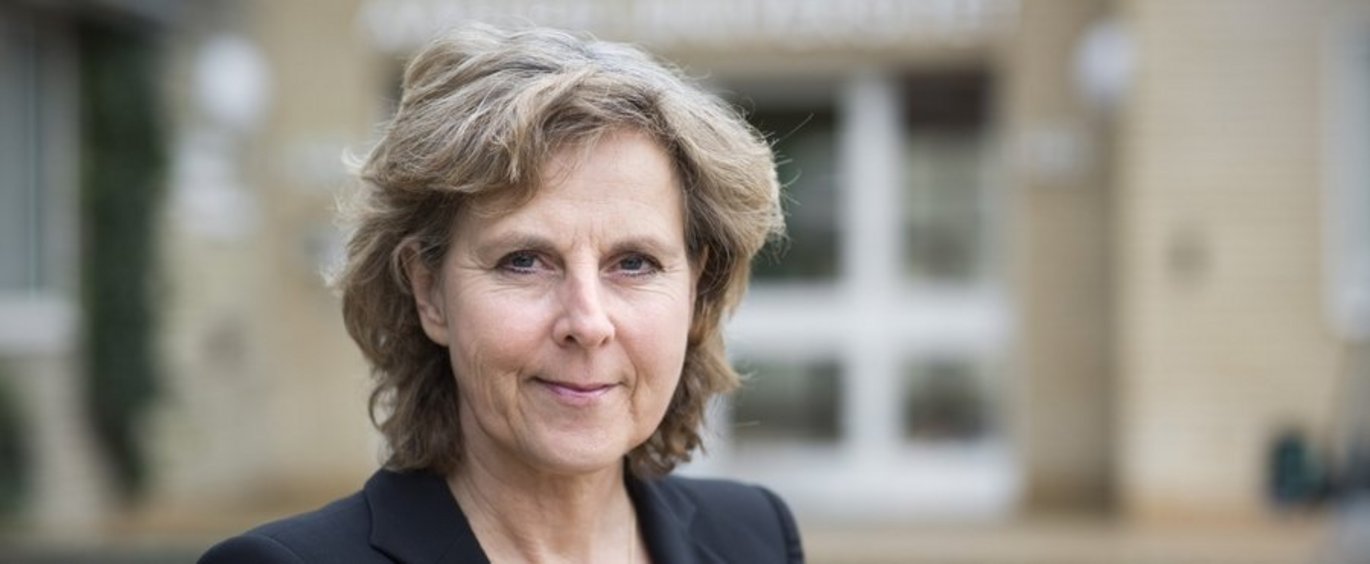Connie Hedegaard: The new climate strategy is not just window dressing: it’s going to have a real effect on AU’s actions
The goals in the draft of Aarhus University’s first climate strategy are ambitious enough that AU will have make deep changes in how it operates to reach them. And that’s good, says Connie Hedegaard, chair of AU’s board.

In early January, Aarhus University released a draft of the university’s first climate strategy.
The overall goal is to reach CO2 neutrality in 2040; in five years’ time, AU will reduce its carbon emissions by a third. The main goals are accompanied by a variety of sub-goals in the areas of transportation, building operations, procurement and waste.
READ MORE: A CO2-neutral Aarhus University in 2040
Connie Hedegaard, chair of Aarhus University’s board, is glad that the strategy contains such concrete goals.
“I wanted fewer, concrete goals that we can actually deliver on than a lot of fancy words and phrases no one can relate to.”
And she also thinks that strategy is sufficiently ambitious:
“Companies often set goals they’re absolutely sure they can achieve, so it’s dubious whether that actually will change anything in that organisation. I’m totally sure that these goals mean that AU will have to change how it operates to achieve them,” Connie Hedegaard says.
This applies to everything from the approach to building the new University City campus to transportation to how the university purchases goods and machines.
“This isn’t just window dressing with pretty words. It’s actually going to change the university’s practices and behavior,” Hedegaard says.
Yes, it will make a difference
But will that change really make a difference, you might ask yourself, if the United States, China and the rest of the world keep on pumping carbon into the atmosphere?
Connie Hedegaard’s answer is a definite “Yes”.
“Clearly, the university’s greatest contribution is the knowledge and the solutions we can make available to the rest of the society. But when you live on supplying knowledge and telling the rest of the society what’s the smart thing to do, you also have to demonstrate that you’re conscious of your responsibility and are helping to shoulder the burden,” she says, adding:
“It also has a negative effect if the people who are supposed to know the most about the climate couldn’t care less.”
According to Hedegaard, if we all just sit down and wait for someone else to do something, we’ll never get anywhere.
“If we’re going to reach the climate goals we’ve set here in Denmark, it can only happen if all organisations, workplaces and companies join in. It’s an incredibly huge challenge, but if we all start acting now, we can actually change things.”
Is it ‘nice to have’ or ‘need to have’?
One area the draft climate strategy highlights is transportation.
The goal is to reduce the university’s climate footprint from air travel by 30 percent.
Precisely how that’s going to happen is, according to Hedegaard, something the individual departments will have to figure out when concrete action plans are developed to follow up on the goals in the strategy.
However, the draft puts a few proposals on the table: making it more attractive to travel by train or using virtual meeting rooms.
“Of course people will still be going to conferences where it can be hard to find good alternatives to air travel. But there will also be some meetings with fewer participants that can be held virtually if you have equipment that works and that’s easy to use,” Hedegaard says.
By the same token, you can replace a flight from Billund to Kastrup with a DSB train ticket.
According to Hedegaard, it’s important that we all turn off our decision-making autopilots: we need to consider whether there are alternatives instead of automatically heading for the departure gate.
“It’s a shift to a culture where you have consider whether something is ‘nice to have’ or ‘need to have’ every time. It forces us to discuss what’s important to participate in – and what’s most important.”
We have to involve everyone
Connie Hedegaard stresses that the highest priority right now is getting the overall strategy in place before starting to adopt concrete initiatives.
“First you set the overall goals and sub-goals and get them approved. The next step in the process is figuring out what consequences the goals will have in a variety of areas throughout the organisation.”
And here it’s important to involve both staff and students. In fact, they have been involved from the beginning –including participating in a working group that contributed to the draft – which Hedegaard is pleased about:
“It’s important for this to be an inclusive process where we draw on the knowledge the university has,” she stresses.
She hopes that even more staff and students will contribute input and concrete proposals to the strategy during the consultation process, which ends on 3 March.
Translated by Lenore Messick

